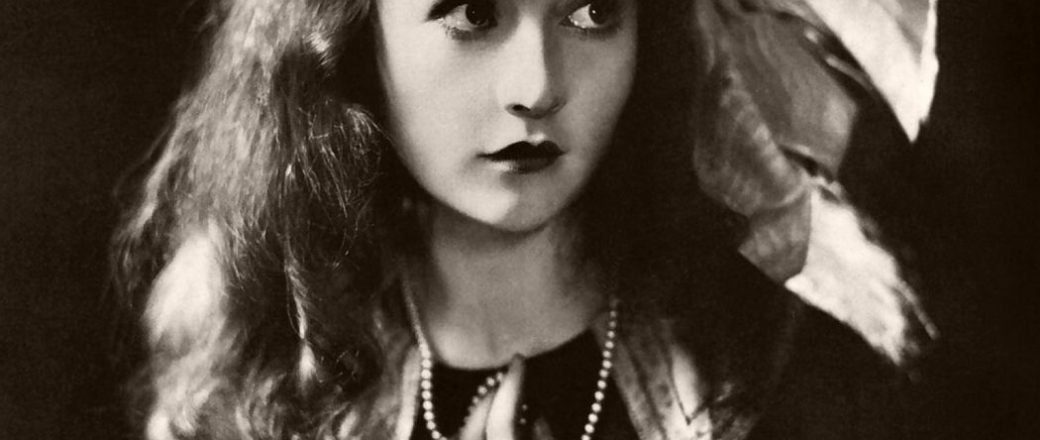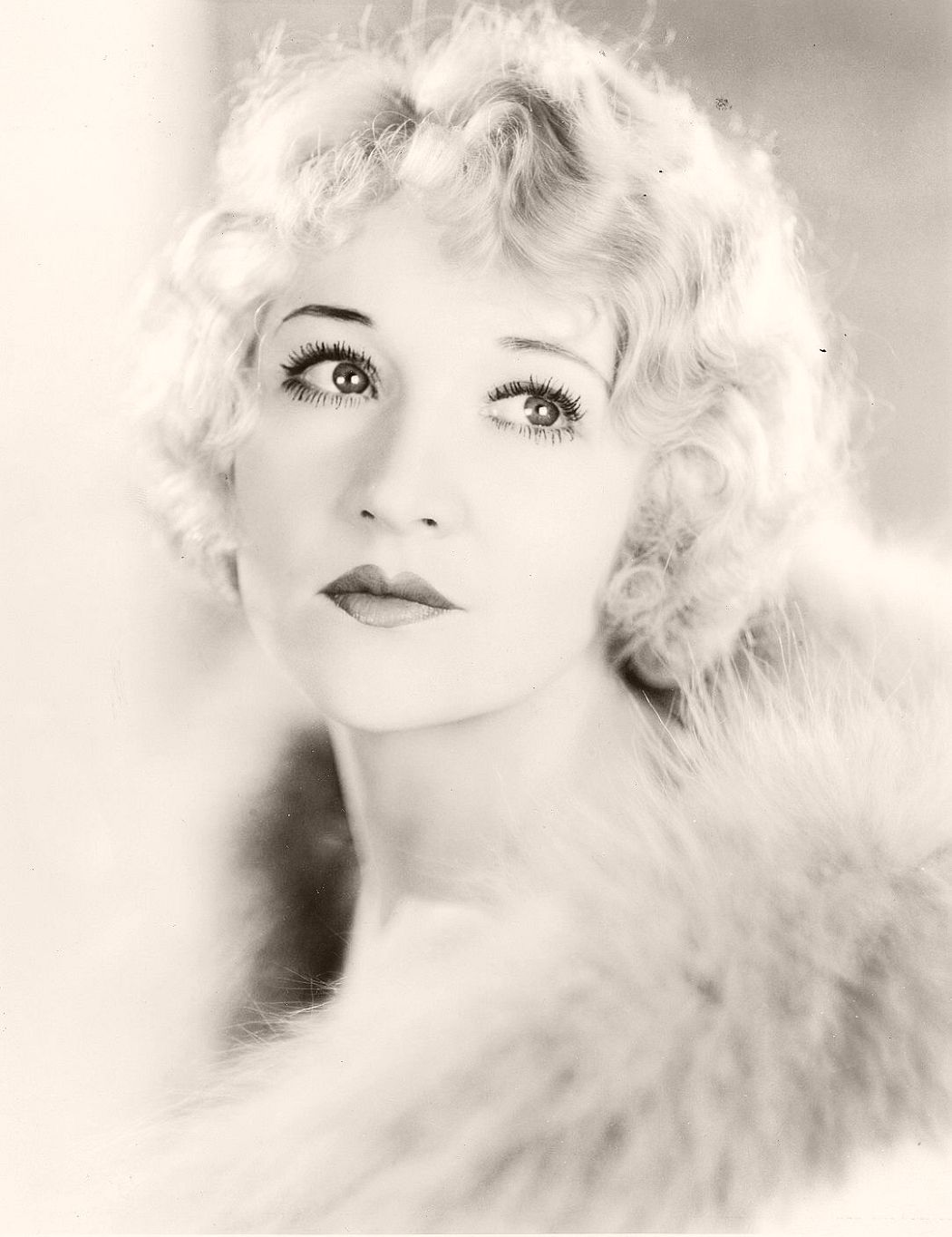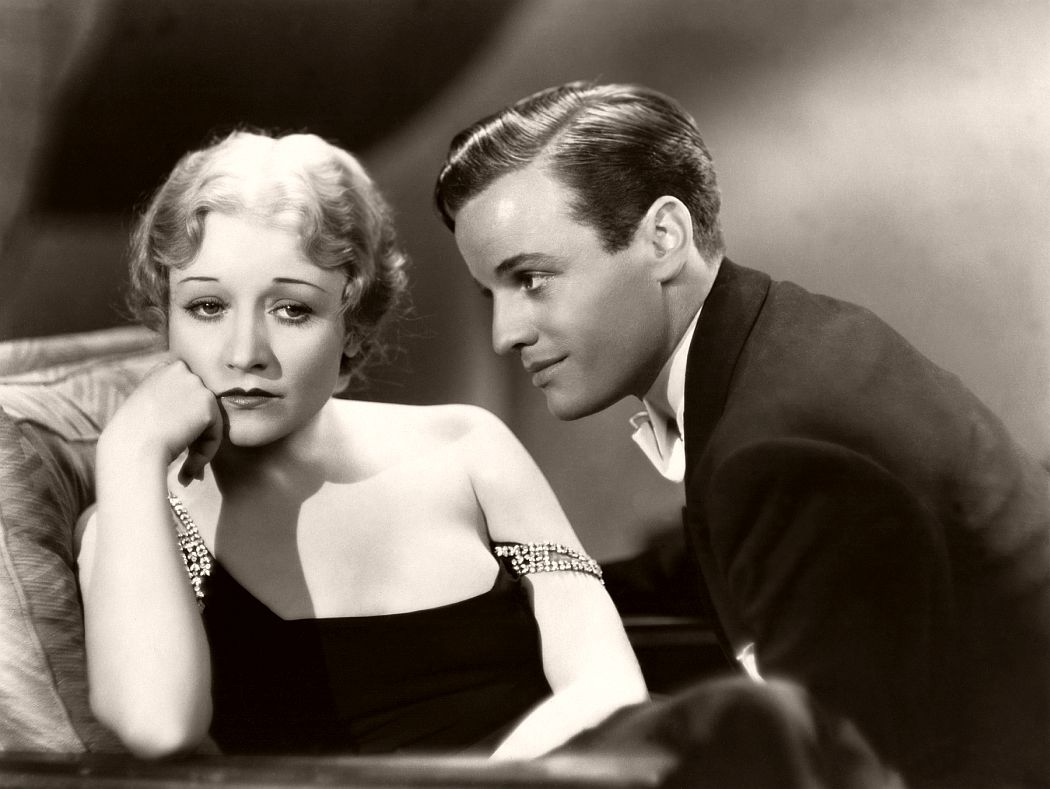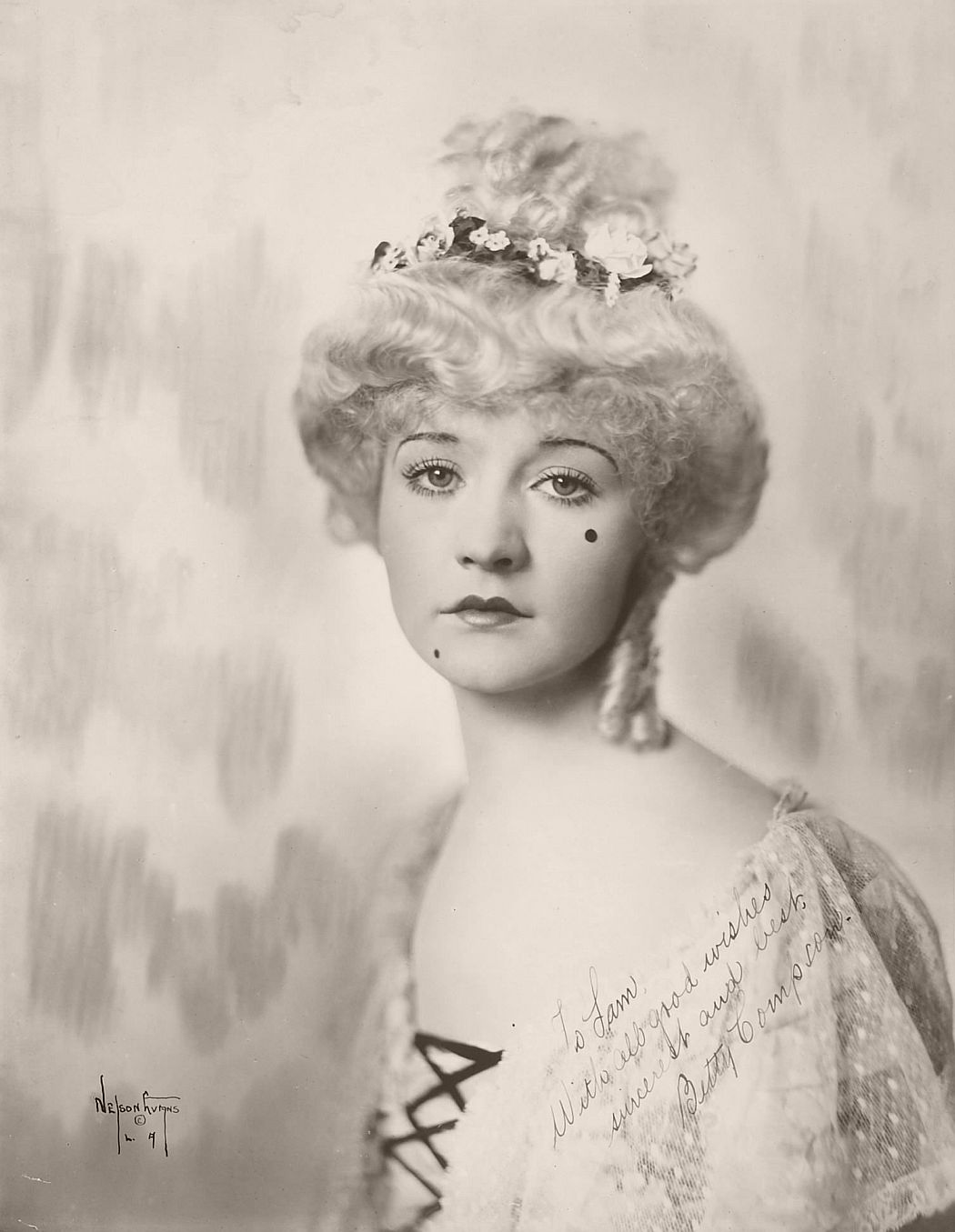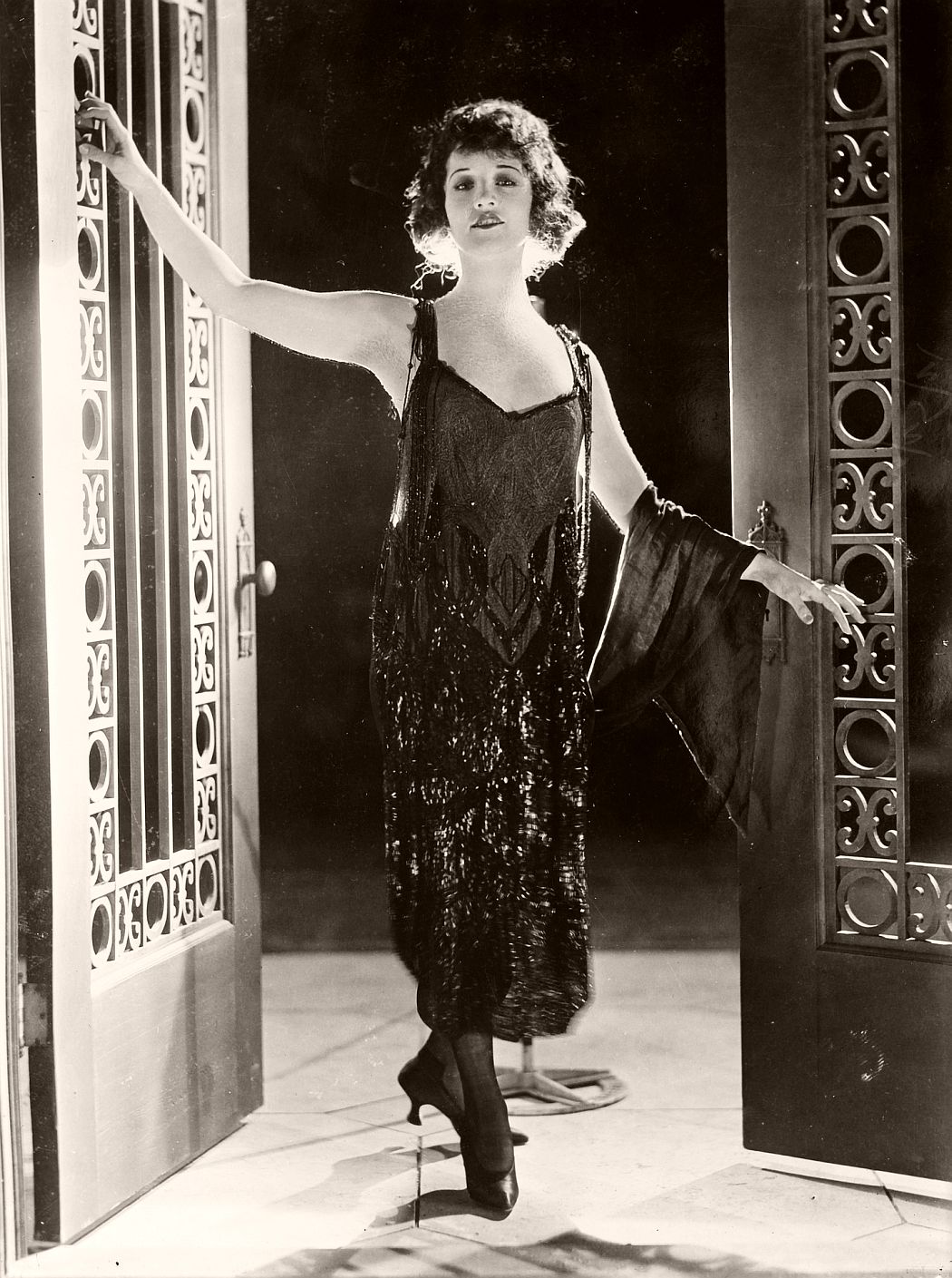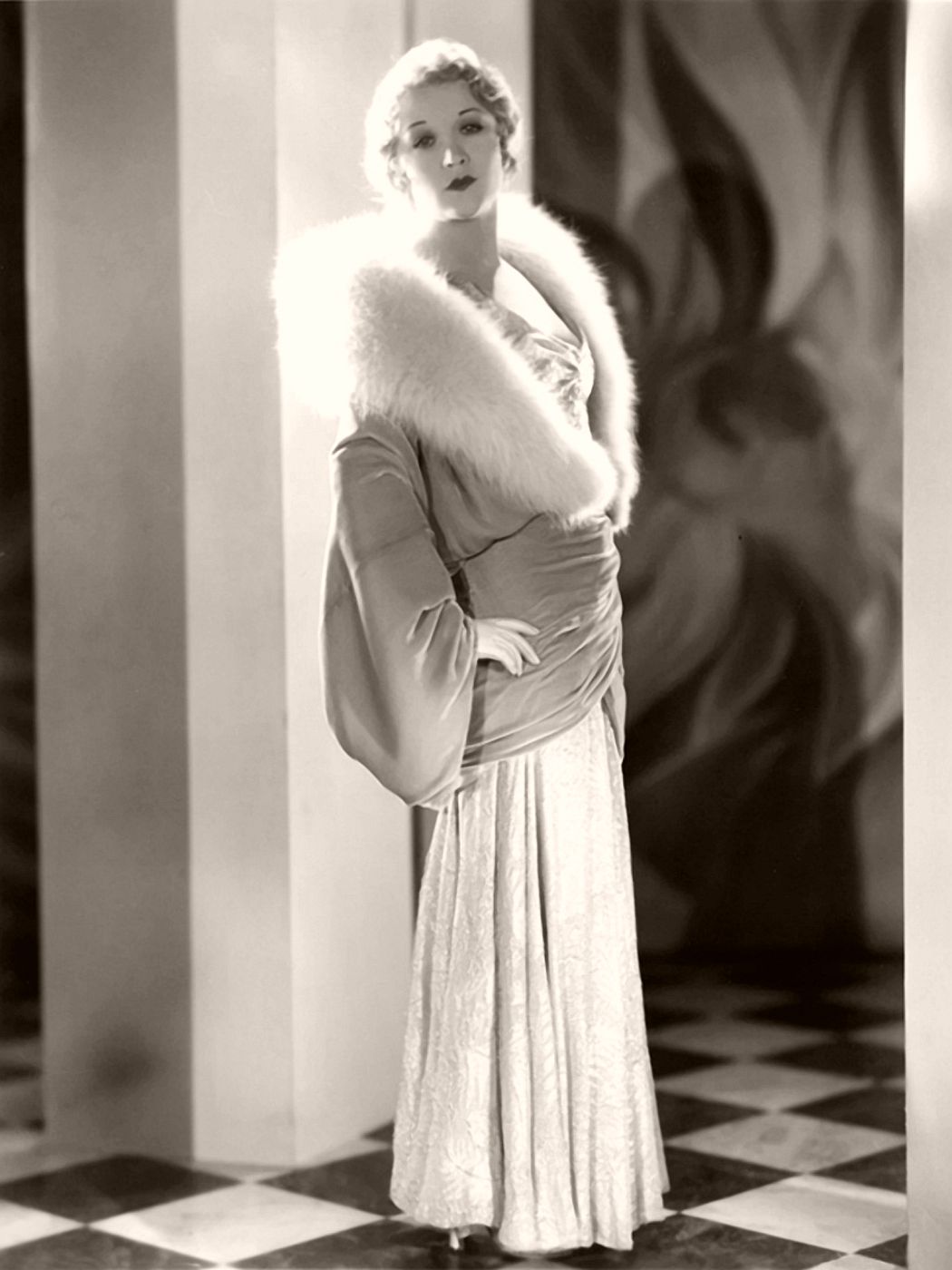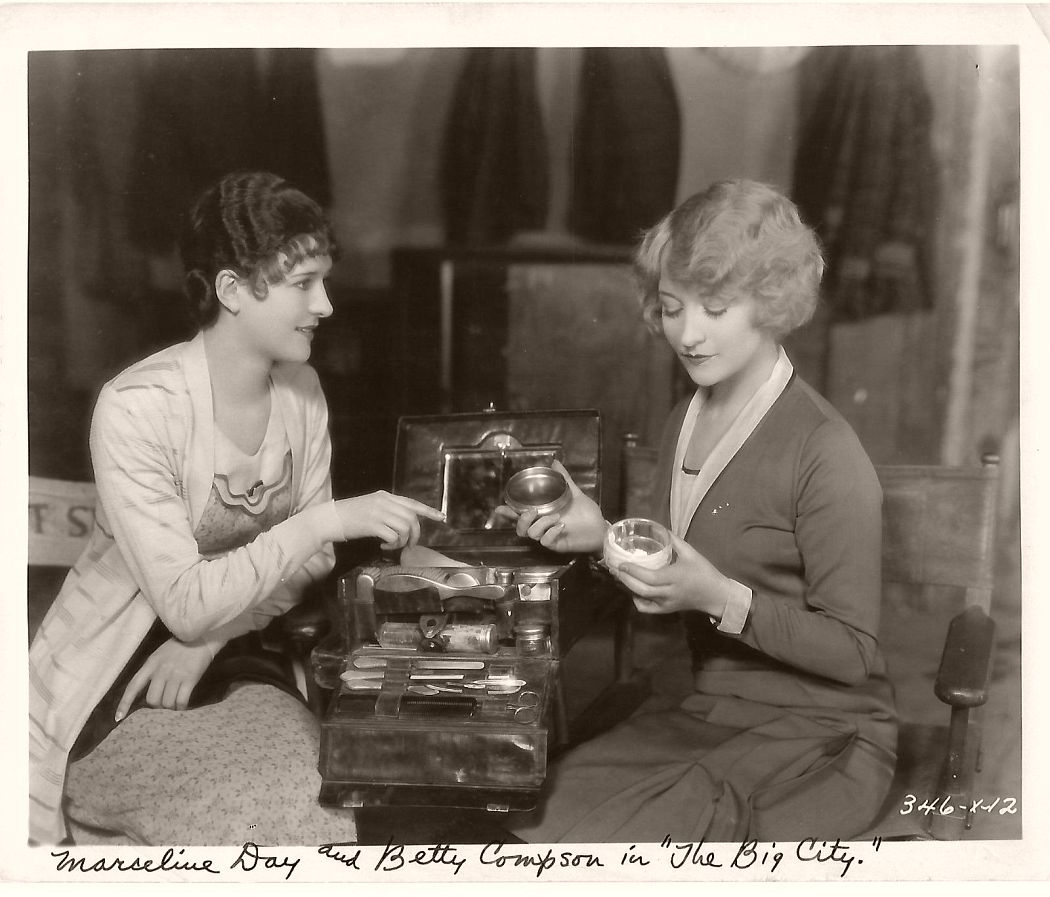Betty Compson (1897 – 1974) was an American actress most famous in silent films and early talkies.
Playing in vaudeville sketches with touring circuits, Compson got noticed by Hollywood producers. While touring, she was discovered by comedic producer Al Christie and signed a contract with him. Her first silent film, Wanted, a Leading Lady, was in November 1915.
She made 25 films in 1916 alone, although all of them were shorts for Christie with the exception of one feature Almost a Widow. She continued this pace of making numerous short films well into the middle of 1918 when after a long apprenticeship with Christie she started making features exclusively. Compson’s star began to rise with the release of the 1919 feature The Miracle Man (1919) for George Loane Tucker. Paramount signed Compson to a five-year contract with help of director Tucker.
Her popularity allowed her to establish her own production company that providing her creative control over screenplays and financing. Her first movie as producer was Prisoners of Love (1921). She played the role of Blanche Davis, a girl born to wealth and cursed by her inheritance of physical beauty. Compson selected Art Rosson to direct the feature. The story was chosen from a work by actress and writer Catherine Henry. After completing The Woman With Four Faces (1923), Paramount refused to offer her a raise (her salary was $2,500 a week) and she refused to sign without one. Instead, she signed with a motion picture company in London, England. There she starred in a series of four films directed by Graham Cutts, a well-known English filmmaker. The first of these was a movie version of an English play called Woman to Woman (1923), the screenplay for which was co-written by Cutts and Alfred Hitchcock. Part of The White Shadow (in which played a dual role), another Cutts/Hitchcock collaboration has been found and preserved from a collection in New Zealand.
Woman to Woman was released in the United States and proved to be popular enough for Jesse Lasky to offer top dollar to return to Paramount. Back in Hollywood, she starred in The Enemy Sex, directed by James Cruze. The two were married on October 25, 1925; they divorced in 1929.[10] Her contract with Paramount was not renewed in 1925 and she decided to freelance, working with lower budget studios such as Columbia Pictures in The Belle of Broadway (1926) and Chadwick in The Ladybird (1926). During this time, she was suggested as a replacement for difficult Greta Garbo in the MGM feature Flesh and the Devil opposite John Gilbert. She was eventually able to work for the studio with former The Miracle Man co-star Lon Chaney in The Big City
In 1928, she appeared in a First National Pictures part-talkie, The Barker. Her performance as manipulative carnival girl Carrie garnered her a nomination for the Academy Award for Best Actress, although she lost to Mary Pickford in Coquette. In “Court-Martial”, a 1928 silent film that apparently has not survived, she became the first actress to portray Old West outlaw Belle Starr on film. In the same year, she appeared in the highly acclaimed Josef von Sternberg film The Docks of New York in a sympathetic portrayal of a suicidal prostitute rescued by stoker George Bancroft. These films caused Compson’s popularity to re-emerge and she became one of the busiest actresses in the new talking cinema. In fact, Chaney offered her the female lead in his first talkie The Unholy Three, but she was too busy and instead suggested friend Lila Lee. Unlike a number of other female stars of silent film, it was felt that her voice recorded exceptionally well. Although she was not a singer, she appeared in a number of early musicals, in which her singing voice was dubbed.

